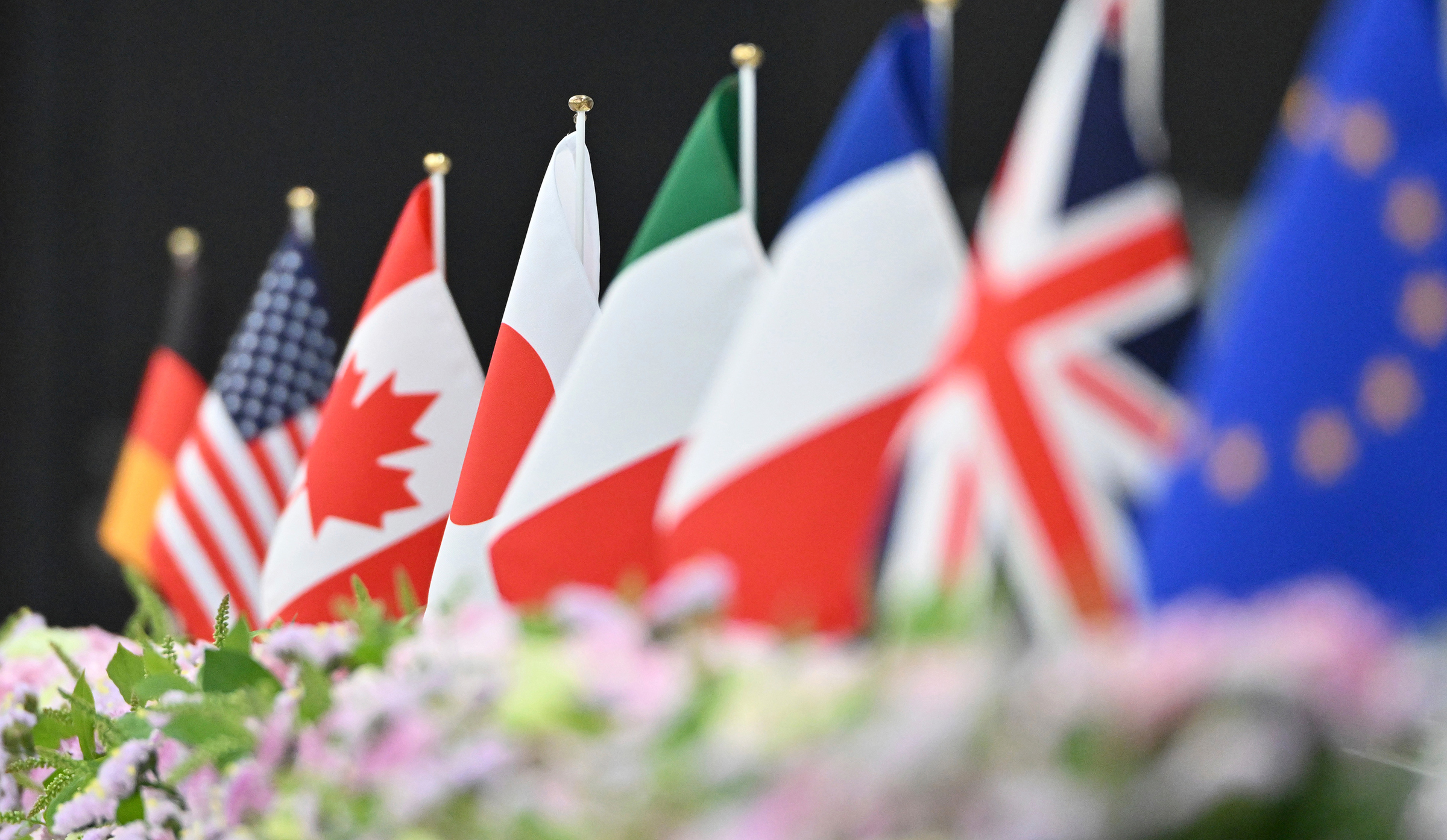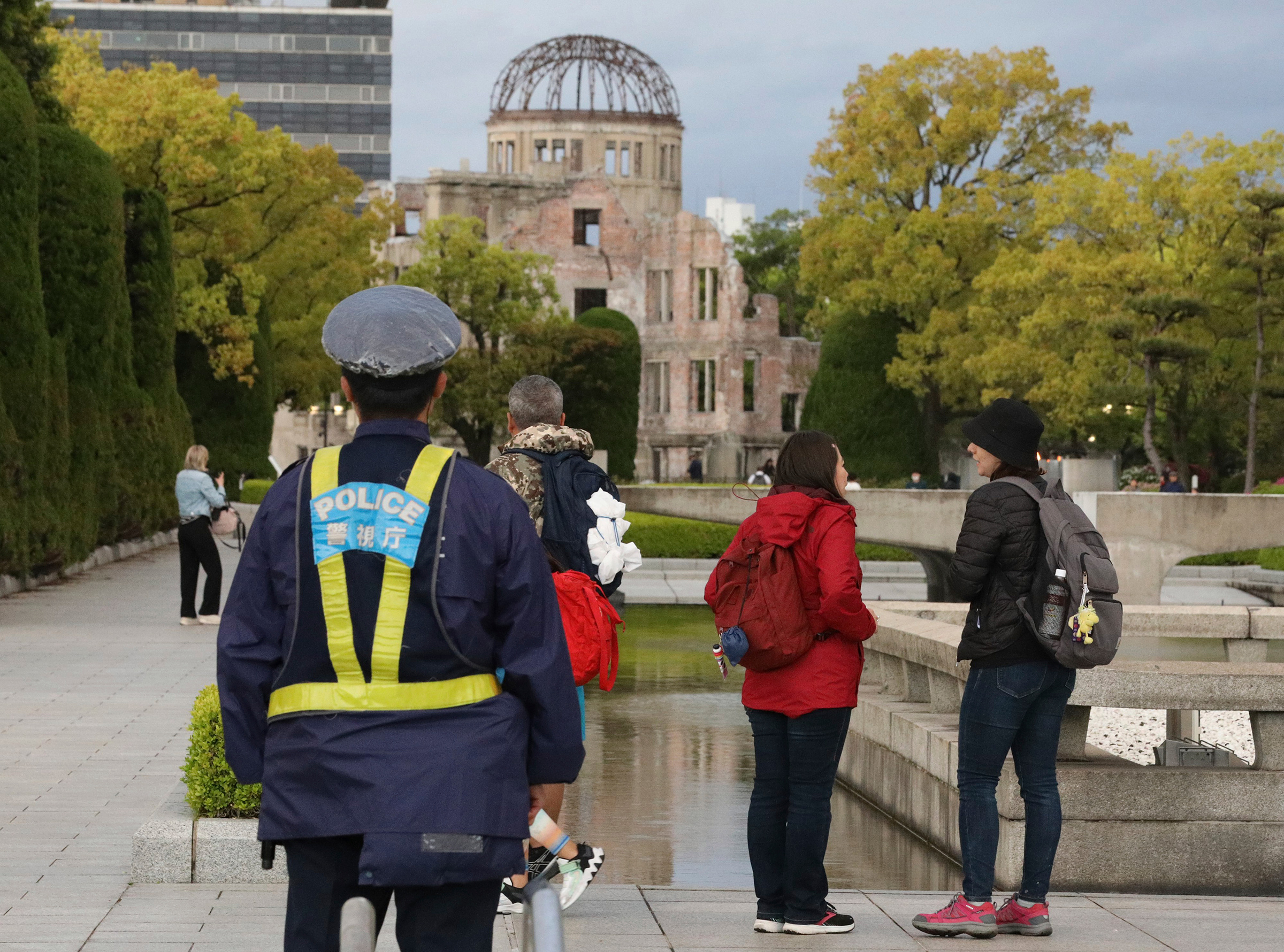
The heads of state of the world’s seven most advanced democratic economies will meet this week at this year’s Group of Seven (G7) Summit in Japan’s Hiroshima, a historic city once decimated by U.S.-dropped nuclear weapons during World War II—and a site observers believe to be emblematic of the international security crises on the group’s agenda.
Top of mind will be the ongoing Russian invasion of Ukraine. Japanese Prime Minister Fumio Kishida, who chairs the G7 for 2023, vowed to lead a “united front in dealing with the Ukraine issue” during a news conference on the anniversary of Moscow’s attack in February. While the war is in Europe, “there is no ‘Europe’ or ‘Asia’ when it comes to rules for peace,” he said.
But Kishida, leader of the only Asian member state in the G7, eyes the summit as an opportunity to also respond to steadily increasing geopolitical tensions in the Indo-Pacific, including North Korea’s expansion of its nuclear arsenal and China’s encroachment toward Taiwan. “Today’s Ukraine could be tomorrow’s East Asia,” he warns.
Here’s what you need to know about the G7 summit, which will be held from May 19 to 21.
What is the G7?
The G7 is an informal bloc formed in response to the economic woes stemming from the 1973 oil crisis. It started out in 1975 as the Group of Six (G6) by the leaders of France, West Germany, Italy, Japan, the United Kingdom, and the United States—the seventh nation, Canada, joined the following year. Russia joined in 1998, and the group was temporarily renamed the G8 until the country was booted out after it annexed Crimea in 2014.

Stephen Nagy, a professor in international politics at the International Christian University in Tokyo, says the bloc represents the most developed and most sophisticated economies on the planet. “The policy choices and the coordination that these G7 members take will likely spill over into other economies,” Nagy says.
Each year, a different member country becomes the host and gets to set the group’s priorities and annual agenda. Since its origin, the G7 has expanded its focus to include a range of topics, such as climate change, international peace and security, and global health. The G7 chair organizes a set of meetings throughout the year to discuss these issues, inviting ministers and other delegates from the member-states. The main meeting, however, is the leaders’ summit, when the heads of state convene.
Who is attending the 2023 leaders’ summit?
Slated to join Kishida in Hiroshima this year are Canadian Prime Minister Justin Trudeau; French President Emmanuel Macron; German Chancellor Olaf Scholz; Italian Prime Minister Giorgia Meloni; U.K. Prime Minister Rishi Sunak; and U.S. President Joe Biden. Customarily, the European Commission President and the European Council President—Ursula von der Leyen and Charles Michel, respectively—are also invited to attend.
The G7 host can invite leaders from other countries, too. For this year’s summit, Kishida has welcomed Australian Prime Minister Anthony Albanese; Indian Prime Minister Narendra Modi; Brazil’s President Lula da Silva; South Korea’s president Yoon Suk-yeol; as well as the leaders of Vietnam, Indonesia, Comoros (representing the African Union), and the Cook Islands (representing the Pacific Forum of Nations) to join as observers.
Since 1996, representatives from international organizations like the United Nations, the International Monetary Fund, and the World Trade Organization, have also been invited to participate.
What is the significance of hosting the summit in Hiroshima?
Kishida will host the G7 summit this year in Hiroshima, his hometown some 418 miles southwest of Tokyo.
On Aug. 6, 1945, American forces detonated an atomic bomb that killed an estimated 70,000-140,000 people in the city. “The unspeakable devastation experienced by Hiroshima and its people was inscribed vividly in my memory,” Kishida recently told TIME, adding that he draws a straight line between Hiroshima and the atrocities Russia is currently exacting in Ukraine.

G7 leaders are expected to tour the remnants of Hiroshima’s devastation, which serve as a reminder of the catastrophic outcomes of war, during their weekend at the summit. “Hiroshima is a kind of symbol of peace,” Yoshikazu Kato, a director of Tokyo-based geopolitical and economic research and consulting firm Trans-Pacific Group, tells TIME.
What will be on the agenda?
While the war in Ukraine will take center stage, the G7 will also be a venue for the member countries to unify against growing Chinese influence in the region, and to deter a possible Chinese invasion of Taiwan.
Bloomberg reported that the G7 finance ministers who met in Niigata on Thursday invited representative counterparts from poorer and emerging economies to attend meetings in order to try to improve their economic ties and counter China’s growing influence in the Global South. Japanese and American officials have also said they want to use the G7 to push for greater cooperation against “economic coercion” by China.
Rapid improvements in artificial intelligence (AI) will also be on the summit agenda. Kishida, according to local news outlet Kyodo, says Japan wants to lead in creating rules for using AI as G7 chair. “AI has the potential to positively change the economy and society, and (it also has) risks,” he reportedly said. The G7’s digital ministers already met in April and agreed to adopt “risk-based” and “human centric” AI policies.
More Must-Reads From TIME
- The 100 Most Influential People of 2024
- Coco Gauff Is Playing for Herself Now
- Scenes From Pro-Palestinian Encampments Across U.S. Universities
- 6 Compliments That Land Every Time
- If You're Dating Right Now , You're Brave: Column
- The AI That Could Heal a Divided Internet
- Fallout Is a Brilliant Model for the Future of Video Game Adaptations
- Want Weekly Recs on What to Watch, Read, and More? Sign Up for Worth Your Time
Contact us at letters@time.com